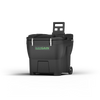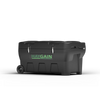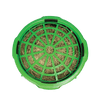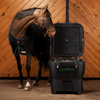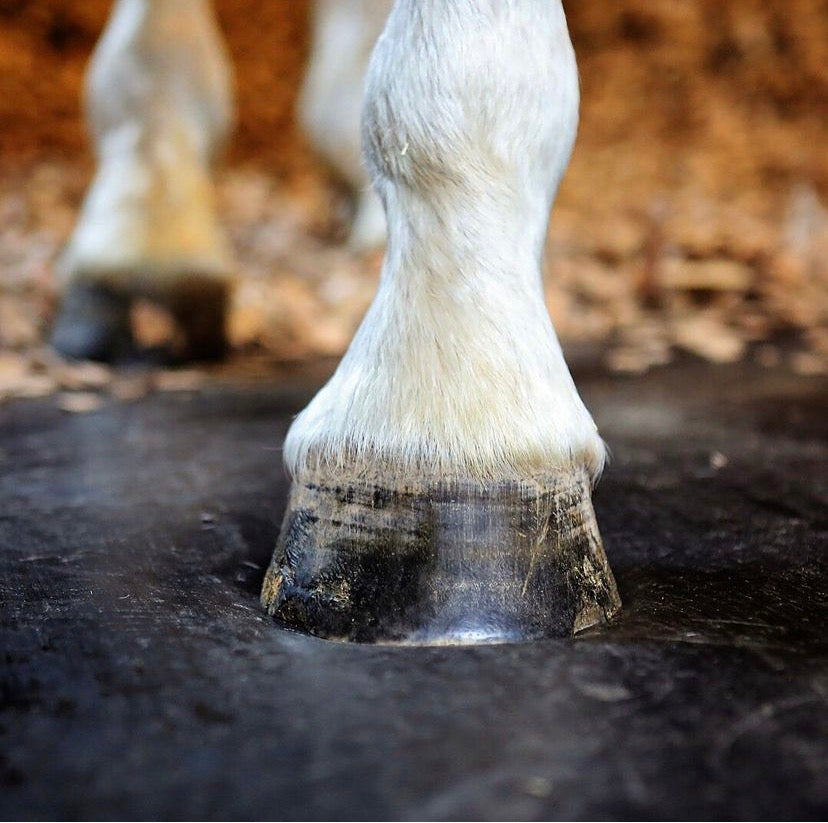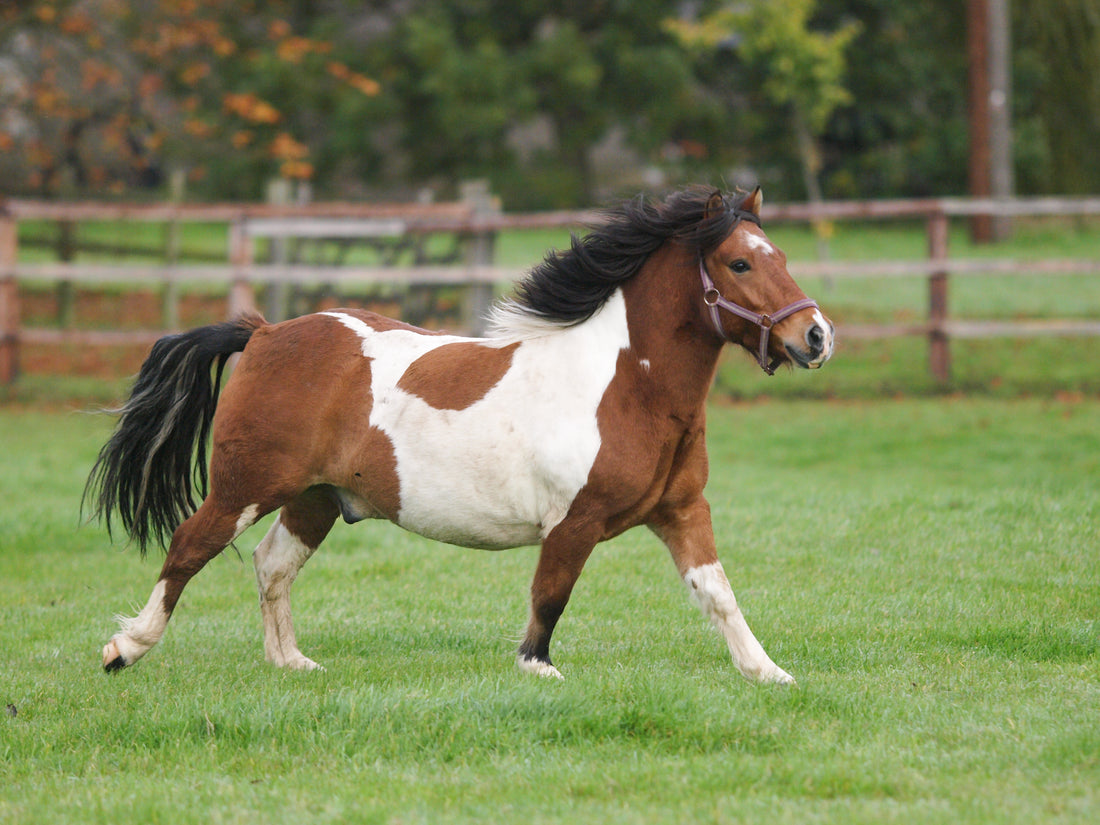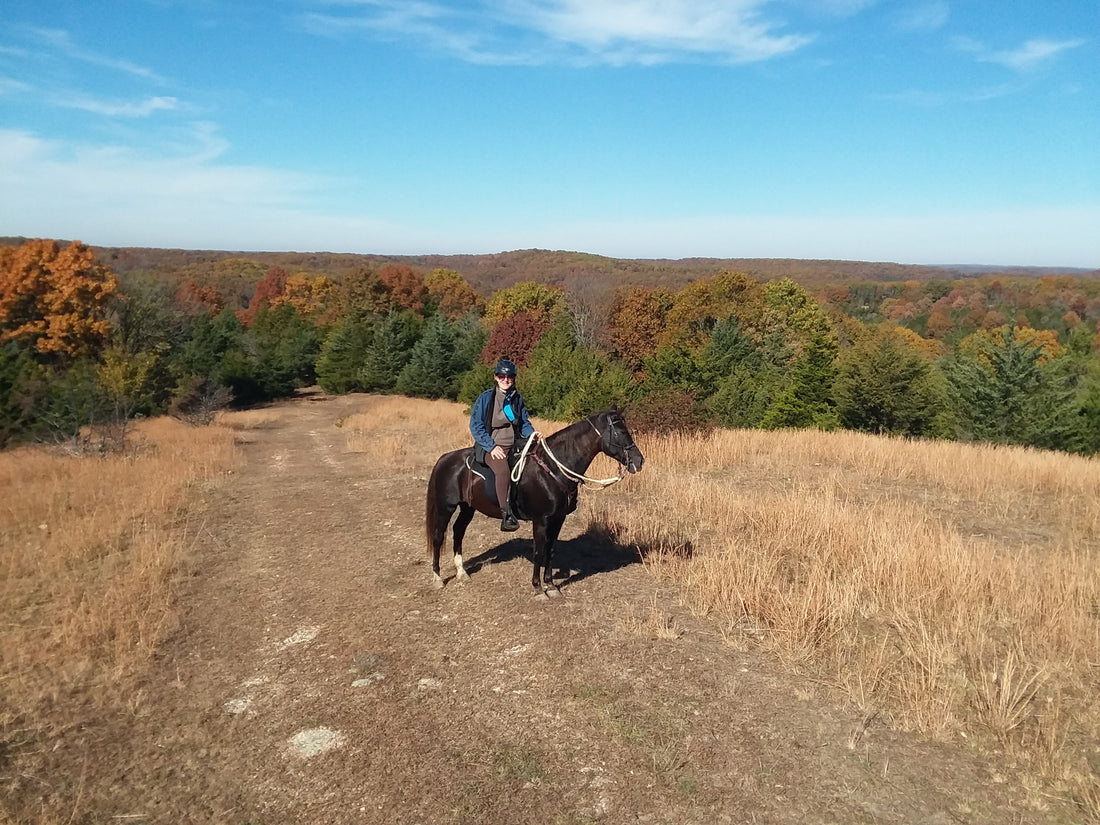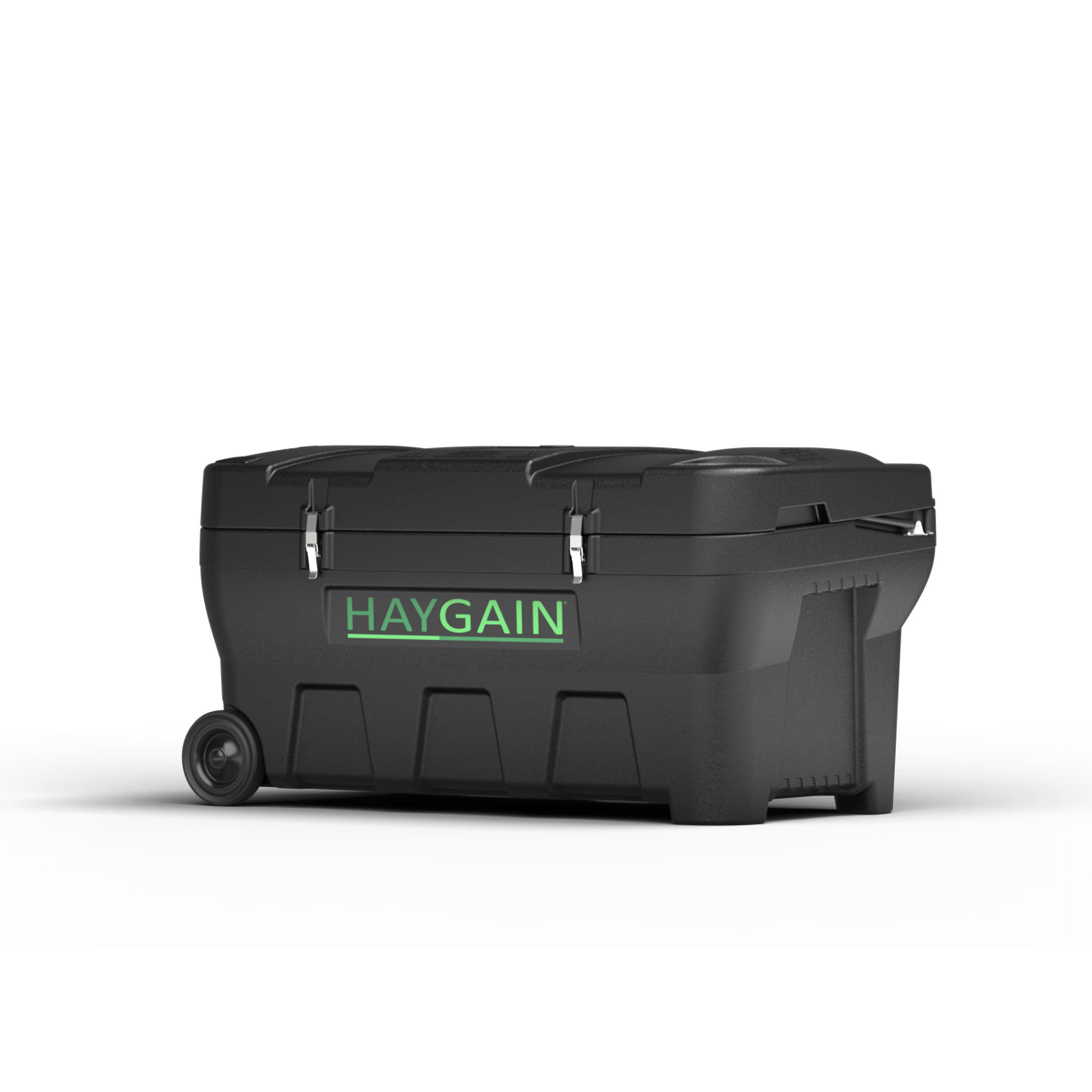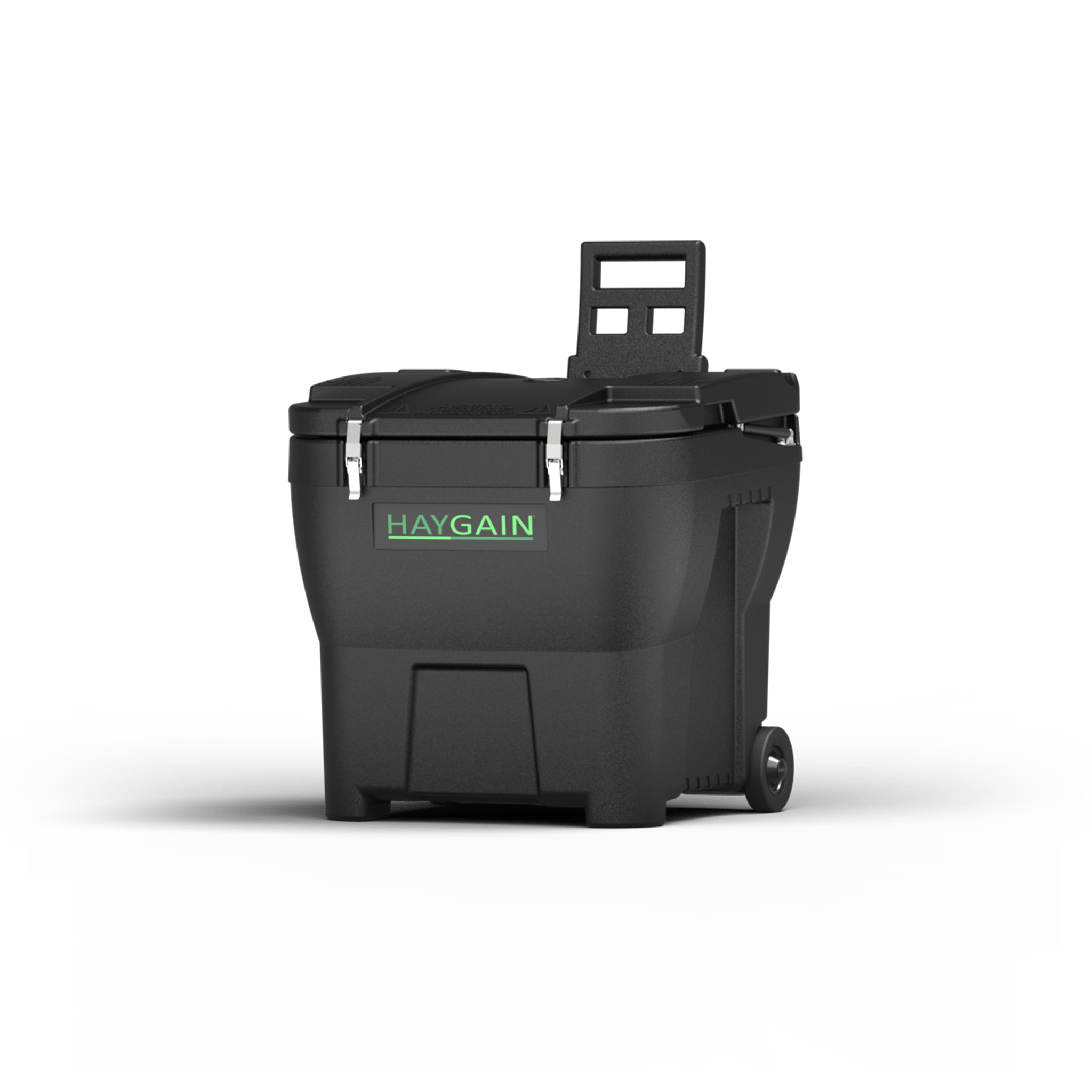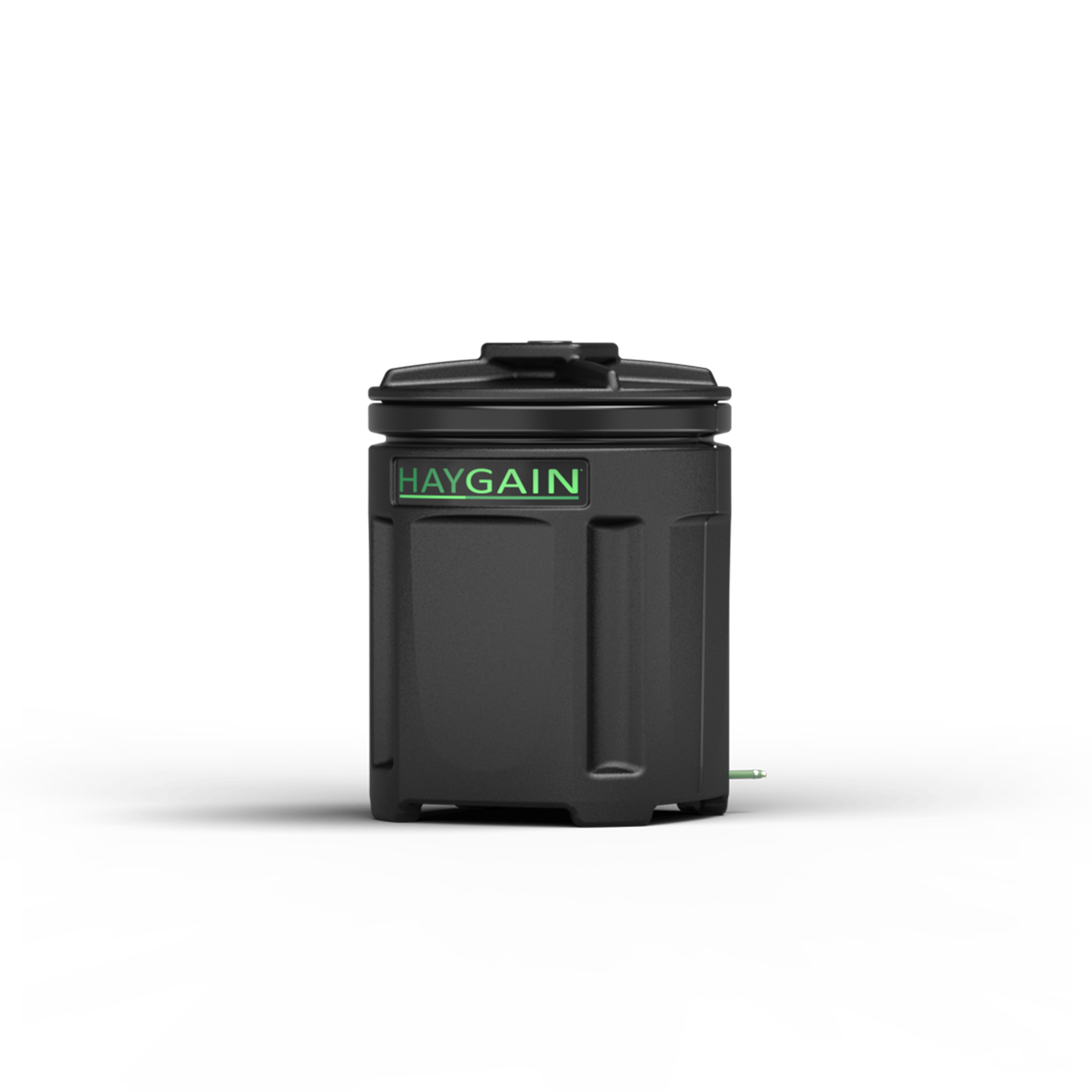Sharon Smith MSc (award-winning Entrepreneur Scientist in the Equine Sector) talks about how the Forager mimics natural grazing behaviour and the benefits to the horse.
 “If you are not a fast eater, I’m sure you know someone who is. I can clear my dinner plate a long time before my companions, without thinking. It’s not that I am hungry, my eating rhythm and movement has just developed that way.Why would I have observed that? Aside from all the years of owning horses and as a SEBC registered equine behaviour consultant, in my post-graduate study I spent many hours observing a range of horses and ponies eating, using slo-mo video and collecting movement data from sensors on their head. I got a bit obsessed by the patterns. Frequency analysis of the sensor data confirmed previous evidence that horses also have a strong, individual rhythm and pattern of movement while grazing[1].
“If you are not a fast eater, I’m sure you know someone who is. I can clear my dinner plate a long time before my companions, without thinking. It’s not that I am hungry, my eating rhythm and movement has just developed that way.Why would I have observed that? Aside from all the years of owning horses and as a SEBC registered equine behaviour consultant, in my post-graduate study I spent many hours observing a range of horses and ponies eating, using slo-mo video and collecting movement data from sensors on their head. I got a bit obsessed by the patterns. Frequency analysis of the sensor data confirmed previous evidence that horses also have a strong, individual rhythm and pattern of movement while grazing[1].
Horses will use their vibrissae (whiskers) and sense of smell[2] to select the next mouthful while chewing on the last one.In time with that chewing rhythm, their highly mobile upper lip will start to manipulate the grass into a clump such that the incisors can grasp and tear at the stem and leaf[3]. In longer grass, horses will pluck the seed-head, or nudge the plant to one side with their muzzle to bite further down the plant.Horses rip the grass by a quick sideways or backwards movement[4], along with tugging upwards in long grass. They briefly stop chewing while this happens, of course, but in very short grass there is little, if any, pause. The grass clump offers a little resistance, but tears readily.
Rhythm and relaxation in movement are what horses have evolved for. It conserves energy, and allows them to remain alert to their environment – not actively considering eating[3]. Grazing allows the horse to stretch and tone the muscles of the ‘topline’ – the upper neck and back – evenly. It allows the airways to drain. The chewing stimulates saliva production which helps buffer stomach acid and minimise ulcer formation. For around 16 hours a day.
Sometimes we must disrupt this activity by removing our horses from pasture. But to give our trickle-feeding herbivores the best chance of remaining sane and healthy, we need to mimic natural posture and behaviour[5] safely. Something haynets do not achieve[6].
The Haygain Forager allows horses to use their lip to choose from several clumps sticking up through the wide, smooth bars of the regulator. They don’t bury their nostrils and breathe in particulates, as they would when loose-feeding or container-feeding (see photo). They can grasp a good mouthful that suits their bite-size, unlike small-holed haynets, and tear at the forage, unlike loose-feeding. They also feel that small resistance when occasionally pulling longer pieces upwards through the moveable regulator (not like haynets)and when acclimatised, are not so frustrated as with other devices - even though it takes them twice as long to eat their hay than if it were loose-fed[6]. Perhaps Haygain could make a human version for me too?”
Sharon Smith
References:
[1] Williams, S. H., Vinyard, C. J., Wall, C. E., &Hylander, W. L. (2007). Masticatory motor patterns in ungulates: a quantitative assessment of jaw‐muscle coordination in goats, alpacas and horses. Journal of Experimental Zoology Part A: Ecological Genetics and Physiology, 307(4), 226-240.
[2] van den Berg, M., Lee, C., Brown, W. Y., &Hinch, G. N. (2016). Does energy intake influence diet selection of novel forages by horses?. Livestock Science, 186, 6-15.
[3] Hongo, A., & Akimoto, M. (2003). The role of incisors in selective grazing by cattle and horses. The Journal of Agricultural Science, 140(04), 469-477.
[4] Waring, G. H. (1983). Horse behavior. The behavioral traits and adaptations of domestic and wild horses, including ponies. Noyes Publications. 124-136.
[5] Elia, J. B., Erb, H. N., &Houpt, K. A. (2010). Motivation for hay: effects of a pelleted diet on behavior and physiology of horses. Physiology &behavior, 101(5), 623-627.
[6] Pickup L. (2017) Efficacy of a novel slow feeding system on intake rate and behaviour in normal and hyper reactive stabled horses. [video of Powerpoint presentation by author] Retrieved from personal files.

